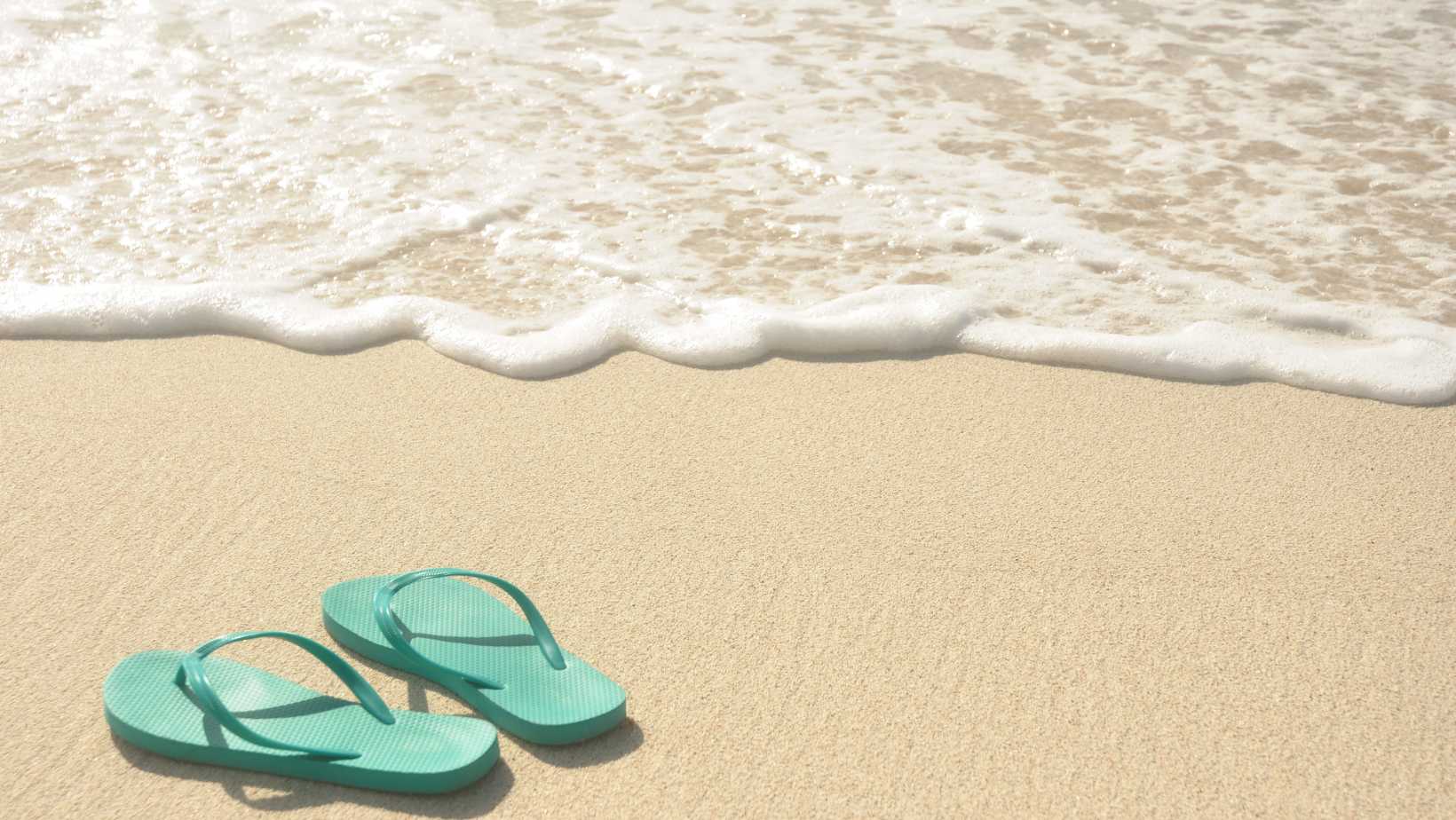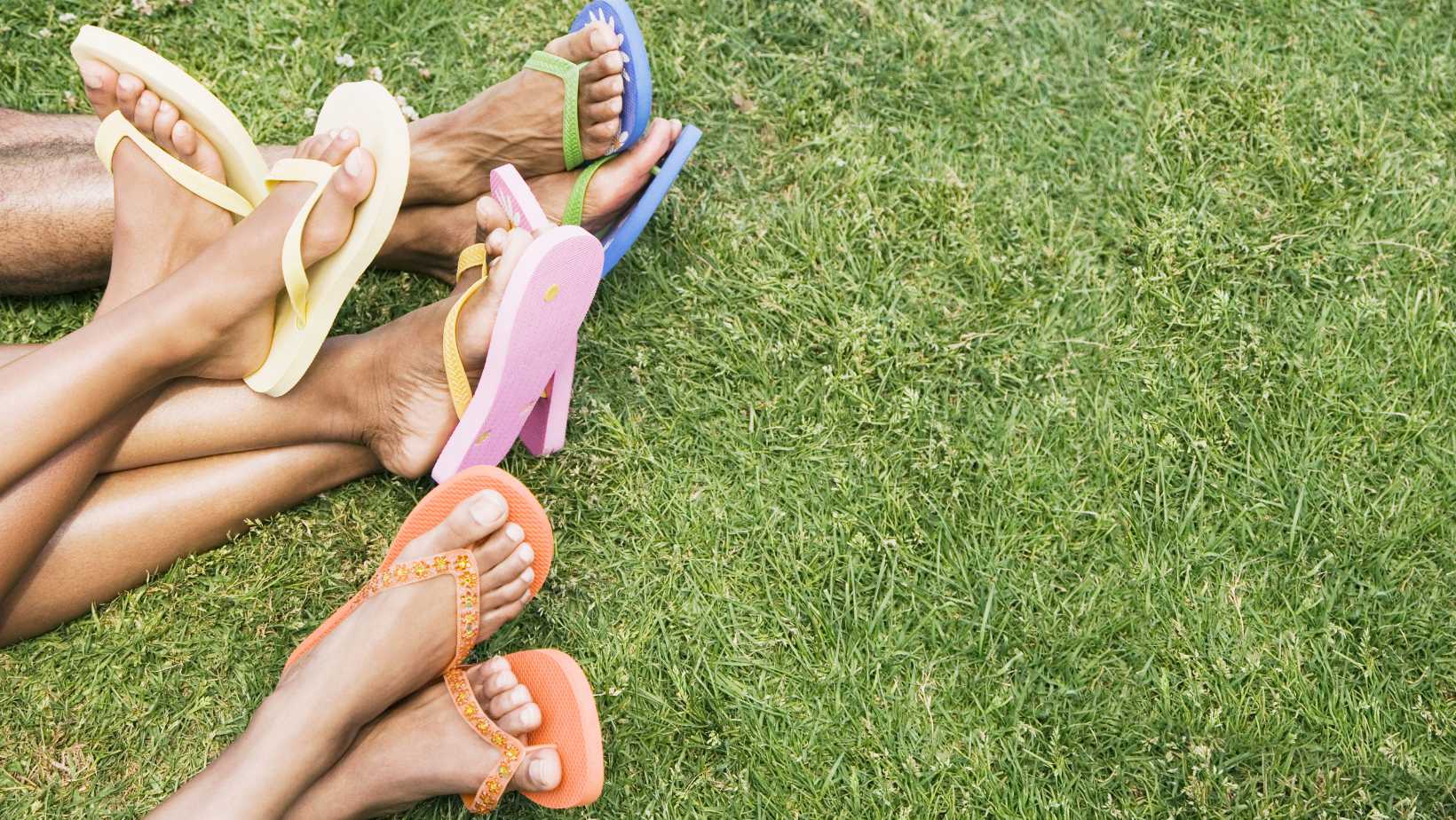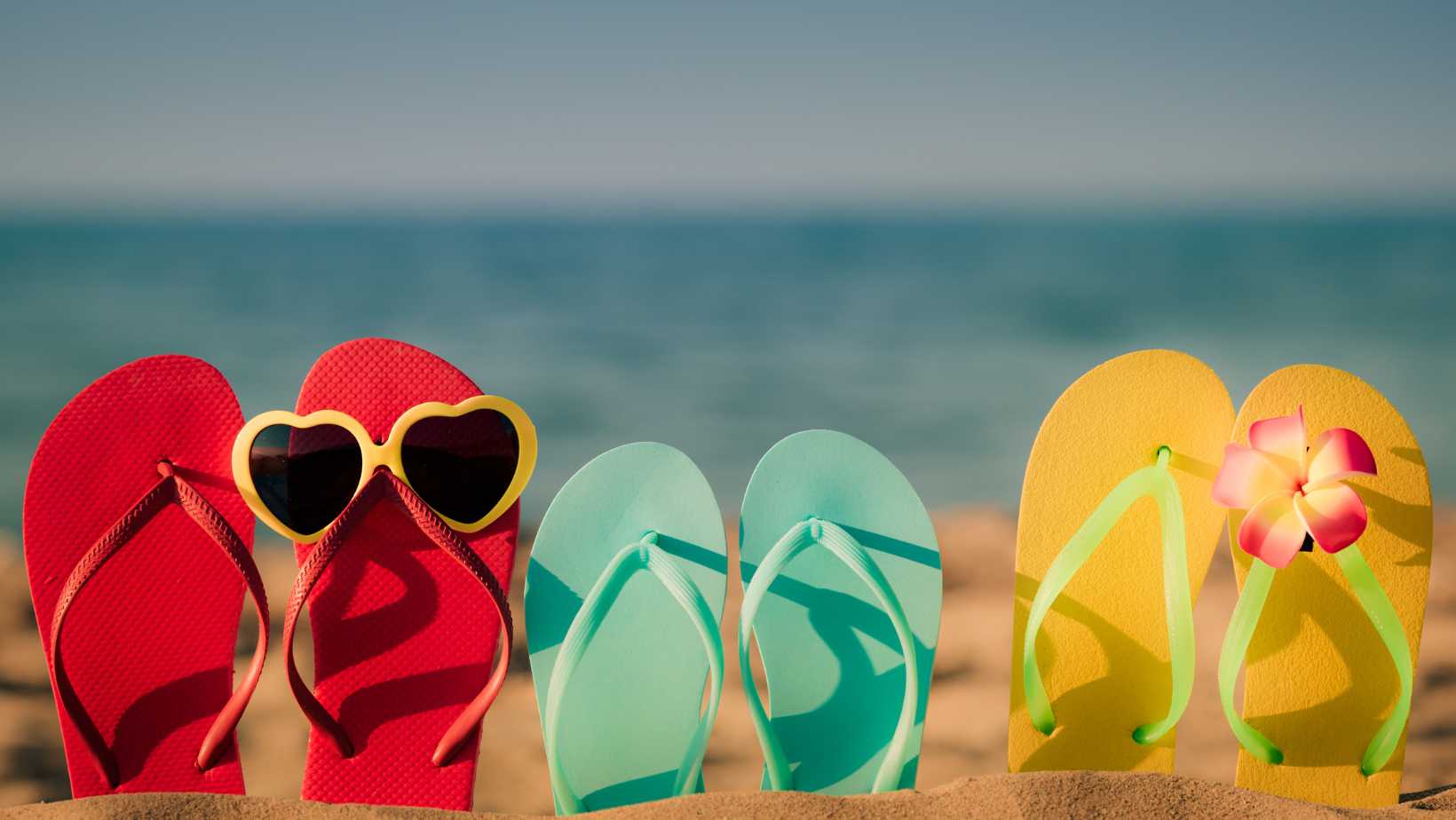History of Flip Flops
Flip flops have an interesting history that can be traced back to ancient times. Initially made of natural materials like leaves and woven grass, they are now crafted with rubber, leather, and suede.
In the 1960s, these comfy shoes became a symbol of the beach lifestyle. The classic design features a flat sole and thin straps that secure at the sides of the foot.
What makes flip flops unique is their versatility: style, affordability, comfort, and convenience. Worn by all genders and ages, they have become an essential wardrobe item worldwide.
Did you know these casual footwear were originally designed for royalty? Flip flops have kept their popularity throughout history because of their simple yet chic design. It’s incredible what a piece of rubber can do! Whoever invented flip flops deserves a standing ovation… or at least a foot massage.
Who Invented Flip Flops
To understand the invention of flip flops, dive into the history of this iconic footwear with two sub-sections: “Who Invented Flip Flops: A Brief History” and “The Evolution of Flip Flops in the Fashion Industry.” Discover how these simple shoes have evolved over time and in fashion to become a spring and summer staple.
Flip Flops, a much-loved shoe worldwide, have an interesting story. It all began in ancient Egypt, when palm leaves and papyrus were interwoven to create the initial sandal – known as the flip flop. Cultures over time have adapted the style, including the Japanese Zori and Indian Paduka.
In modern days, the flip flop is a must-have beach and casual item. It is thought that the US soldiers brought them back from Japan during WWII, and it wasn’t until the 1950s and 60s that they became mainstream due to rubber advances.
Surprisingly, flip flops were not always fashionable. It wasn’t until the late 90s and early 2000s when designers launched them in their collections, that they became trendy.
Flip flops owe their invention to various civilizations from history. From palm leaves to rubber designs and colors, they have come far. Today, millions love them worldwide.
And the legend of Pele – the Brazilian footballer who kept on his Havaianas (popular flip flops) during a match for luck – further proves the power these shoes possess! From beachwear to haute couture, flip flops have evolved – just like the grains of sand between our toes.
The Evolution of Flip Flops in the Fashion Industry
Flip flops have been a part of the fashion world since ancient times. They’ve evolved from basic rubber soles to designer versions with colorful patterns. Eco-friendly materials, recycled tire rubber, degradable foam footbeds, and biodegradable straps are making them an ethical choice.
Flip flops can be more than just casual wear. They make great fashion items for summer occasions such as beach, poolside parties, or destination weddings. Brands can partner up with event management companies to create mutually beneficial campaigns. Custom designs that represent personalities or favorite sports teams are also great commercial and individual options when done with effective market research strategies.
Flip flops aren’t just beach necessities anymore. They’re a fun way to look fashionable and show your carefree attitude.
Flip Flops Today: A Fashion Statement
To make flip flops a fashion statement, explore how they have gained popularity in the fashion world and the impact of popular flip flop brands in the fashion industry. Delving into these subsections will shed light on the importance of flip flops in the fashion world and their evolution from simple beachwear to a fashion trend.

Flip Flops and Their Popularity in the Fashion World
Flip flops are now a popular fashion statement. Both men and women of all ages have embraced them. They’ve also been showcased on fashionable runways, making them a sought-after item by high-end brands.
They come in various colors, materials, and designs, suitable for all occasions – from casual to formal events. Designers love their practicality and comfortability.
Flip flops are affordable and easily available worldwide. People can express their personality through the many styles available.
The origin of flip flops dates back thousands of years, to ancient Egypt. They were made with papyrus leaves or palm fronds, held together by straps. Later, Japan introduced Zori made from rice straw or other plant fibers such as igusa. Post-World War II America saw mass production of rubber flip flops. Despite its long history, modern-day flip-flops have seen several iterations, still maintaining their core design for comfort and flexibility.
It’s clear that flip flops have surpassed their original purpose as beachwear, and are now widely accepted as a practical fashion statement. Whether you call them thongs, jandals, or flip flops, they’ve made a name for themselves in the fashion industry.
Popular Flip Flop Brands and Their Impact in the Fashion Industry
Flip-flops have made a huge impression in the fashion world with their look and style. Here’s an overview of some of the top brands that have had a big influence:
| Brand Name | Type | Price Range |
| Havaianas | Rubber-based | $10 – $50 |
| Teva Mush II | Sporty & Comfy | $30 – $40 |
| Birkenstock Gizeh | Leather Sandal Flip Flop | $80 – $140 |
These flip flops are special. They fit in mainstream fashion. They come in fun and chic styles. And they work for any season or event.
One fashion blogger paired flip flops with a bold dress to a wedding reception. It got lots of attention from famous people and on social media.
Looks like flip flops are here to stay! Plus, they can be used as a weapon against spider attacks.
The Future of Flip Flops in Fashion
To dive deeper into the future of flip flops in fashion, let’s take a closer look at emerging trends in flip flop designs and sustainable flip flop brands and the environment. These two subsections offer unique solutions to the impact flip flops have on the fashion industry.

Emerging Trends in Flip Flop Designs
Flip flops have been redesigned to meet the needs of the modern market. Comfort, sustainability, and style are key elements of the new designs. Consumers now have a variety of flip flop styles to choose from, such as eco-friendly, strappy, arch support, and athletic.
Some customers prioritize fashion, while others prefer comfort or durability. Materials like recycled plastics and memory foam are being used to make flip flops more eco-friendly and comfortable.
Flip flops have a long history, tracing back to 3000 B.C. in Japan. Today, they have become a global phenomenon. Sustainable flip flop brands now offer stylish options for those looking to save the planet.
Sustainable Flip Flop Brands and the Environment
Some brands like Indosole, Gumbies, Reef, and Tidal offer 100% biodegradable or compostable flip flops from natural materials.
Sustainable Flip Flop Brands prioritize ethical production. This includes fair labor policies and certifications to protect workers’ rights.
Design excellence is also important, staying up-to-date with fashion trends.
Zero waste manufacturing and circular economy models help create a closed-loop system which minimizes environmental impact.
Sustainable Flip Flop Brands are becoming increasingly popular. This reflects how conscious consumers are opting for eco-friendly products to support a sustainable future.
Fashion may be ever-changing, but Sustainable Flip Flop Brands offer shoes that simultaneously look good and protect the environment. Manufacturing these eco-friendly materials can take up to four months due to the complex process. It’s time to incorporate sustainability principles into your life!

















































